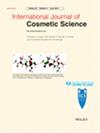Development of the Hair & Scalp CARE questionnaire: Measuring the impact of hair and scalp issues on psychological wellbeing in healthy populations
Abstract
Objective
Haircare cosmetic products are commonly reported to have a positive impact on psychological wellbeing. These effects are attributed to increased feelings of confidence and improved self-esteem facilitated by improved hair and scalp condition. However, the causal relationship between hair and scalp health and psychological wellbeing is under-researched. This paper reports the results of an extensive survey of haircare consumers in diverse populations using an exploratory Hair & Scalp CARE (Condition and Affective Response Evaluations) questionnaire.
Method
Participants (N = 1184) completed an online 23-item questionnaire designed to capture hair and scalp-related wellbeing as an initial exploratory validation of Hair & Scalp CARE. For the analysis, the data were randomly split into 2 equal samples; Sample 1 provided the data for the initial exploratory factor analysis, and Sample 2 was used for confirmatory factor analysis. Participants also provided demographic information and completed the Sleep Health Index (SHI) and Perceived Stress Scale (PSS) to investigate sleep health and perceived stress.
Results
Factor analysis provided a one-factor solution, explaining 55% of the variance. The final version of the Hair & Scalp CARE questionnaire consisted of 21 items. The one-factor structure was supported by confirmatory factor analysis. Correlational analyses demonstrated that higher scores on Hair & Scalp CARE were also associated with lower PSS scores and higher SHI scores.
Conclusion
The Hair & Scalp CARE questionnaire is a valid tool for the assessment of the impact of hair and scalp condition on psychological wellbeing. The present data also suggest a relationship between hair and scalp wellbeing and other psychological wellbeing indicators, as healthier hair and scalp was also linked to lower levels of perceived stress and good sleep health. Hair & Scalp CARE could be used within a variety of further research designs to demonstrate the positive impact of cosmetic haircare products on wellbeing.


 求助内容:
求助内容: 应助结果提醒方式:
应助结果提醒方式:


